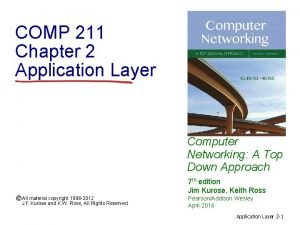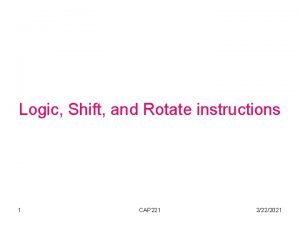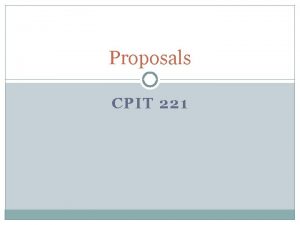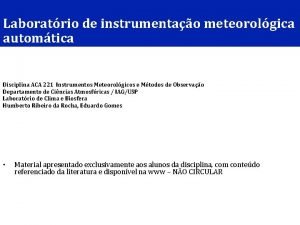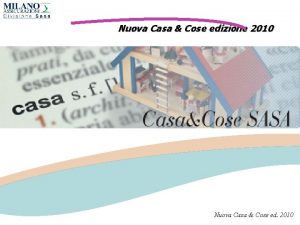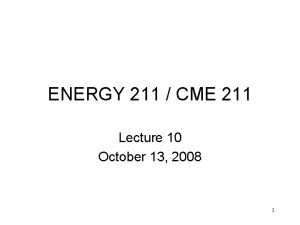COSE 221 COMP 211 Logic Design Lecture 6























![Verilog-HDL Representation module adder #(parameter N = (input [N-1: 0] input output [N-1: 0] Verilog-HDL Representation module adder #(parameter N = (input [N-1: 0] input output [N-1: 0]](https://slidetodoc.com/presentation_image_h/fc8b60684010c148f55315e9f3884dbb/image-24.jpg)









- Slides: 33

COSE 221, COMP 211 Logic Design Lecture 6. Adders Prof. Taeweon Suh Computer Science & Engineering Korea University

Introduction • So far, we have studied the basic skills of designing combinational and sequential logic using schematic and Verilog-HDL • Now, we are going to study some interesting combinational and sequential blocks, including § Arithmetic circuits: Adders and Subtractor § Counters § Shift Registers • Also, we are going to discuss how computer represents floatingpoint numbers § float and double in C langauge • The last topics to discuss are Memory and Logic Arrays 2 Korea Univ

Arithmetic Circuits • Computers are able to perform various arithmetic operations such as addition, subtraction, comparison, shift, multiplication, and division § Arithmetic circuits are the central building blocks of computers (CPUs) • We are going to study hardware implementations of these operations • Let’s start with adder • Addition is one of most common operations in computer 3 Korea Univ

1 -bit Half Adder • Let’s first consider how to implement an 1 -bit adder A B • Half adder § 2 inputs: A and B § 2 outputs: S (Sum) and Cout (Carry) A B 0 0 0 1 1 Sum Carry S(um ) 0 C(arry ) 0 1 0 0 1 4 Korea Univ

1 -bit Full Adder • Half adder lacks a Cin input to accept Cout of the previous column Cin • Full adder § 3 inputs: A, B, Cin § 2 outputs: S, Cout 5 A B 0 0 0 1 1 1 0 0 1 1 1 S(um ) 0 Cout 1 0 0 1 1 1 0 Korea Univ

1 -bit Full Adder Cin A B S(um ) Cout 0 0 0 0 1 1 0 0 1 0 1 1 1 0 0 1 1 1 Cin Cout AB 00 01 11 10 0 0 1 1 1 0 00 01 11 10 0 1 0 1 1 1 Cin Sum AB 00 01 11 10 0 1 0 1 1 1 Slide from Prof. Sean Lee, Georgia Tech Cin or 6 AB Korea Univ

1 -bit Full Adder Schematic A S B Cin Half Adder Cout Slide from Prof. Sean Lee, Georgia Tech 7 Korea Univ

Multi-bit Adder • It seems that an 1 -bit adder is doing not much of work • How to build a multi-bit adder? § N-bit adder sums two N-bit inputs (A and B), and Cin (carry-in) • Three common CPA implementations § Ripple-carry adders (slow) § Carry-lookahead adders (fast) § Prefix adders (faster) • It is commonly called carry propagate adders (CPAs) because the carry-out of one bit propagates into the next bit 8 Korea Univ

Ripple-Carry Adder • The simplest way to build an N-bit CPA is to chain 1 bit adders together § Carry ripples through entire chain Example: 32 -bit Ripple Carry Adder 9 Korea Univ

4 -bit Ripple-Carry Adder Carry A 3 B 3 A 2 B 2 A 1 B 1 A 0 B 0 A B A B Full Cin Adder Cout S S S 3 S 2 S 1 S 0 S A B Cin Cout Modified from Prof Sean Lee’s Slide, Georgia Tech 10 Korea Univ

Delay of Ripple Carry Adder A 0 B 0 Carry Cin S 0 1 st Stage Critical Path = 3 gate delays = DXOR+DAND+DOR Slide from Prof. Sean Lee, Georgia Tech 11 Korea Univ

Delay of Ripple Carry Adder A 1 B 1 A 0 B 0 Cin S 1 S 0 2 nd Stage Critical Path 1 st Stage Critical Path = 2 -gate delay = 3 -gate delay = DAND+DOR = DXOR+DAND+DOR (Assume that inputs are applied at the same time) Slide from Prof. Sean Lee, Georgia Tech 12 Korea Univ

Delay of Ripple Carry Adder A 3 B 3 A 2 B 2 A 1 B 1 A 0 B 0 Carry Cin S 3 S 2 S 1 S 0 • Critical path delay of a 4 -bit ripple carry adder • DXOR + 4 (DAND+DOR) : 9 -gate delay • Critical path delay of an N-bit ripple carry adder • 2(N-1)+3 = (2 N+1) - gate delay Modified from Prof Sean Lee’s Slide, Georgia Tech 13 Korea Univ

Ripple-Carry Adder Delay • Ripple-carry adder has disadvantage of being slow when N is large § The delay of an N-bit ripple-carry adder is roughly tripple = N • t. FA (t. FA is the delay of a full adder) • A faster adder needs to address the serial propagation of the carry bit 14 Korea Univ

Carry-Lookahead Adder • The fundamental reason that large ripple-carry adders are slow is that the carry signals must propagate through every bit in the adder • A carry-lookahead adder (CLA) is another type of CPA that solves this problem. § It divides the adder into blocks and provides circuitry to quickly determine the carry-out of a block as soon as the carry-in is known 15 Korea Univ

Carry-Lookahead Adder • Compute the carry-out (Cout) for an N-bit block § Compute generate (G) and propagate (P) signals for columns and then an N-bit block § A column (bit i) can produce a carry-out by either generating a carryout or propagating a carry-in to the carry-out • Generate (Gi) and Propagate (Pi) signals for each column § A column will generate a carry-out if both Ai and Bi are 1 G i = A i Bi § A column will propagate a carry-in to the carry-out if either Ai or Bi is 1 Pi = A i + B i • Express the carry-out of a column (Ci) in terms of Pi and Gi Ci = Ai Bi + (Ai + Bi )Ci-1 = Gi + Pi Ci-1 16 Korea Univ

Carry Generate & Propagate gi = A i B i pi = A i + B i Ci = Ai. Bi + (Ai + Bi) Ci -1 C =g +p C i i-1 C 0 = g 0 + p 0 C-1 C 1 = g 1 + p 1 C 0 = g 1 + p 1 g 0 + p 1 p 0 C-1 C 2 = g 2 + p 2 C 1 = g 2 + p 2 g 1 + p 2 p 1 g 0 + p 2 p 1 p 0 C-1 C 3 = g 3 + p 3 C 2 = g 3 + p 3 g 2 + p 3 p 2 g 1 + p 3 p 2 p 1 g 0 + p 3 p 2 p 1 p 0 C -1 What do these equations mean? Let’s think about these equations for a moment Modified from Prof H. H. Lee’s Slide, Georgia Tech 17 Korea Univ

Carry Generate & Propagate • A 4 -bit block will generate a carry-out if column 3 generates (g 3) a carry or if column 3 propagates (p 3) a carry that was generated or propagated in a previous column G 3: 0 = g 3 + p 3 (g 2 + p 2 (g 1 + p 1 g 0 ) = g 3 + p 3 g 2 + p 3 p 2 g 1 + p 3 p 2 p 1 g 0 • A 4 -bit block will propagate a carry-in to the carry-out if all of the columns propagate the carry P 3: 0 = p 3 p 2 p 1 p 0 • We compute the carry-out of the 4 -bit block (Ci) as Ci = Gi: j + Pi: j Cj-1 18 Korea Univ

4 -bit CLA Carry Lookahead Logic C 3 C 2 g 3 S 3 A 3 C 1 p 3 B 3 g 2 S 2 A 2 C 0 p 2 B 2 Slide from Prof. Sean Lee, Georgia Tech g 1 S 1 19 C-1 A 1 p 1 B 1 g 0 S 0 A 0 p 0 B 0 Korea Univ

A CLA Implementation p 3 p 2 g 1 p 3 p 2 p 1 g 0 p 3 p 2 p 1 p 0 C-1 Carry Lookahead Logic C 3 gi = A i B i pi = A i + Bi p 3 S 3 A 3 B 3 g 2 C 2 p 2 S 2 A 2 B 2 C 0 = g 0 + p 0 C-1 C 1 = g 1 + p 1 C 0 = g 1 + p 1 g 0 + p 1 p 0 C-1 C 2 = g 2 + p 2 C 1 = g 2 + p 2 g 1 + p 2 p 1 g 0 + p 2 p 1 p 0 C-1 C 3 = g 3 + p 3 C 2 = g 3 + p 3 g 2 + p 3 p 2 g 1 + p 3 p 2 p 1 g 0 + p 3 p 2 p 1 p 0 C- C 1 C-1 g 1 p 1 S 1 A 1 B 1 C 0 g 0 p 0 S 0 A 0 B 0 Only 3 gate delay for each Carry C i = DAND + 2*DOR 1 Slide from Prof. Sean Lee, Georgia Tech 20 Korea Univ

32 -bit CLA with 4 -bit blocks An implementation in our book: each block contains a 4 -bit RCA and carry-lookahead logic C 0 = g 0 + p 0 C-1 C 1 = g 1 + p 1 C 0 = g 1 + p 1 g 0 + p 1 p 0 C-1 C 2 = g 2 + p 2 C 1 = g 2 + p 2 g 1 + p 2 p 1 g 0 + p 2 p 1 p 0 C-1 C 3 = g 3 + p 3 C 2 = g 3 + p 3 g 2 + p 3 p 2 g 1 + p 3 p 2 p 1 g 0 + p 3 p 2 p 1 p 0 C-1 Ci = Gi: j + Pi: j Cj-1 G 3: 0 = g 3 + p 3 (g 2 + p 2 (g 1 + p 1 g 0 ) = g 3 + p 3 g 2 + p 3 p 2 g 1 + p 3 p 2 p 1 g 0 P 3: 0 = p 3 p 2 p 1 p 0 It shows a path to C 3 only 21 Korea Univ

CLA Delay • The delay of an N-bit CLA with k-bit blocks is roughly: t. CLA = tpg + tpg_block + (N/k – 1)t. AND_OR + kt. FA where § tpg is the delay of the column generate and propagates § tpg_block is the delay of the block generate and propagates § t. AND_OR is the delay from Cin to Cout of the final AND/OR gate t. AND_OR tpg_block tpg 22 Korea Univ

Adder Delay Comparisons • Compare the delay of 32 -bit ripple-carry adder and CLA § The CLA has 4 -bit blocks § Assume that each two-input gate delay is 100 ps § Assume that a full adder delay is 300 ps tripple t. CLA = Nt. FA = 32(300 ps) = 9. 6 ns = tpg + tpg_block + (N/k – 1)t. AND_OR + kt. FA = [100 + 600 + (7)200 + 4(300)] ps = 3. 3 ns 23 Korea Univ
![VerilogHDL Representation module adder parameter N input N1 0 input output N1 0 Verilog-HDL Representation module adder #(parameter N = (input [N-1: 0] input output [N-1: 0]](https://slidetodoc.com/presentation_image_h/fc8b60684010c148f55315e9f3884dbb/image-24.jpg)
Verilog-HDL Representation module adder #(parameter N = (input [N-1: 0] input output [N-1: 0] output 8) a, b, cin, s, cout); assign {cout, s} = a + b + cin; endmodule 24 Korea Univ

Then, When to Use What? • We have discussed 3 kinds of CPA § Ripple-carry adder § Carry-lookahead adder § Prefix adder (see backup slides) • Faster adders require more hardware and therefore they are more expensive and power-hungry • So, depending on your speed requirement, you can choose the right one • If you use HDL to describe an adder, the CAD tools will generate appropriate logic considering your speed requirement 25 Korea Univ

Backup Slides 26 Korea Univ

An Implementation of CLA p 3 p 2 p 1 p 0 C-1 p 0 C-1 C 3 g 3 p 3 C 2 gi = A i B i pi = A i + Bi g 2 p 2 C 1 S 3 A 3 B 3 C 0 = g 0 + p 0 C-1 C 1 = g 1 + p 1 C 0 = g 1 + p 1 g 0 + p 1 p 0 C-1 C 2 = g 2 + p 2 C 1 = g 2 + p 2 g 1 + p 2 p 1 g 0 + p 2 p 1 p 0 C-1 C 3 = g 3 + p 3 C 2 = g 3 + p 3 g 2 + p 3 p 2 g 1 + p 3 p 2 p 1 g 0 + p 3 p 2 p 1 p 0 C 1 Slide from Prof. Sean Lee, Georgia Tech 27 S 2 A 2 B 2 g 1 p 1 C 0 S 1 A 1 B 1 g 0 p 0 S 0 A 0 B 0 § Carry delay is 4*DAND + 2*DOR for C 3 § Reuse some gate output results in little improvement Korea Univ

Prefix Adder • Computes generate and propagate signals for all of the columns (!) to perform addition even faster • Computes G and P for 2 -bit blocks, then 4 -bit blocks, then 8 -bit blocks, etc. until the generate and propagate signals are known for each column § Then, the prefix adder has log 2 N stages • The strategy is to compute the carry in (Ci-1) for each of the columns as fast as possible and then to compute the sum: Si = (Ai Å Bi) Å Ci-1 28 Korea Univ

Prefix Adder • A carry is generated by being either generated in a column or propagated from a previous column • Define column -1 to hold Cin, so G-1 = Cin, P-1 = 0 Then, Ci-1 = Gi-1: -1 because there will be a carry out of column i-1 if the block spanning columns i-1 through -1 generates a carry • Thus, we can rewrite the sum equation as: Si = (Ai Å Bi) Å Gi-1: -1 29 Korea Univ

Prefix Adder • The generate and propagate signals for a block spanning bits i: j are Gi: j = Gi: k + Pi: k Gk-1: j Pi: j = Pi: k. Pk-1: j • These signals are called the prefixes because they must be precomputed before the final sum computation can complete • In words, these prefixes describe that § A block will generate a carry if the upper part (i: k) generates a carry or the upper part propagates a carry generated in the lower part ( k 1: j) § A block will propagate a carry if both the upper and lower parts propagate the carry. 30 Korea Univ

4 -bit Prefix Adder A 3 A 2 A 1 A 0 B 3 B 2 B 1 B 0 P 2, G 2 P 1, G 1 Cin P 0, G 0 P-1, G-1 Remember that P 2: -1 is always “ 0” since P-1 = 0, but intermediate propagate signals (P 1: -1 , P 0: -1 , P 2: 1) are used for calculating subsequent generate signals G-1 = Cin, P-1 = 0 P i = A i B i , Gi = A i + B i P 2: 1, G 2: 1 P 2: -1, G 2: -1 P 0: -1, G 0: -1 P 2: -1 = P 2: 1 P 0: -1 , G 2: -1 = G 2: 1 + P 2: 1 G 0: -1 P 1: -1, G 1: -1 C 2 = G 2: -1 C 1 = G 1: -1 C 0 = G 0: -1 S 3 S 2 P 2: 1 = P 2 P 1, G 2: 1 = G 2 + P 2 G 1 P 0: -1 = P 0 P-1, G 0: -1 = G 0 + P 0 G-1 S 1 C-1 = G -1 S 0 31 P 1: -1 = P 1 P 0: -1 , G 1: -1 = G 1 + P 1 G 0: -1 S 3 = A 3 + B 3 + G 2: -1 S 2 = A 2 + B 2 + G 1: -1 + S 1 = A 1 + B 1 G 0: -1 + + S 0 = A 0 B 0 G-1 Korea Univ

16 -bit Prefix Adder G-1 = Cin, P-1 = 0 32 Korea Univ

Prefix Adder Delay • The delay of an N-bit prefix adder is: t. PA = tpg + log 2 N(tpg_prefix ) + t. XOR where § tpg is the delay of the column generate and propagates § tpg_prefix is the delay of the black prefix cell 33 Korea Univ
 Le cose importanti della vita
Le cose importanti della vita Comp 211
Comp 211 Comp 211
Comp 211 Comp 211
Comp 211 01:640:244 lecture notes - lecture 15: plat, idah, farad
01:640:244 lecture notes - lecture 15: plat, idah, farad Membership function fuzzy logic
Membership function fuzzy logic Fuzzy logic lecture
Fuzzy logic lecture Fuzzy logic lecture
Fuzzy logic lecture First order logic vs propositional logic
First order logic vs propositional logic First order logic vs propositional logic
First order logic vs propositional logic Third order logic
Third order logic Combinational logic vs sequential logic
Combinational logic vs sequential logic Cryptarithmetic problem logic+logic=prolog
Cryptarithmetic problem logic+logic=prolog 캠블리 단점
캠블리 단점 Majority circuit
Majority circuit Combinational logic sequential logic 차이
Combinational logic sequential logic 차이 Logic chapter 3
Logic chapter 3 Csce 221 tamu
Csce 221 tamu Phy 221 msu
Phy 221 msu People first timesheet
People first timesheet Cap 221
Cap 221 Sp 221
Sp 221 Emmett bond results
Emmett bond results Epsc 221
Epsc 221 Geoffrey tien ubc
Geoffrey tien ubc Csce 221 tamu syllabus
Csce 221 tamu syllabus Cpit 221
Cpit 221 221 - 206
221 - 206 Cpit221
Cpit221 Decena de millar ejemplos
Decena de millar ejemplos Aca 221
Aca 221 Fin 221
Fin 221 Cse 221
Cse 221 Cs 221
Cs 221



